West Bengal: Seven Talking Points
- Will industries flock to Bengal given Mamata Banerjee's impetuous image, post Singur and Nandigram?
- Can she convince farmers who have voted for her that she has a more benign land acquisition policy?
- Will the Trinamool Congress's disconcerting proximity to Maoists cast its shadow over state law and order?
- Could a demanding Mamata weigh down the UPA government with her demands for the state?
- Will there be an outbreak of violence between entrenched Left cadres and enthusiastic TMC folk?
- Can the new government retain the secular nature of riot-free Bengal that the Left had justly created?
- Does Left have the leadership to rise from the ashes or will the Bengal unit blame Prakash Karat for its rout?
***
| West Bengal :294 | ||||
| 2006 | 2011 | |||
| Parties/Alliances | % Votes | Seats | % Votes | Seats |
| Left Front+ | 48.41 | 227 | 41 | 61 |
| CPI (M) | 37.13 | 176 | 40 | |
| AIFB | 5.66 | 23 | 11 | |
| RSP | 3.71 | 20 | 7 | |
| CPI | 1.91 | 8 | 2 | |
| DSP (P) | 1 | |||
| Trinamool+ | 41.61 | 52 | 49 | 227 |
| Trinamool | 26.64 | 30 | 39 | 184 |
| Congress | 14.71 | 21 | 10 | 42 |
| SUCI | 1 | |||
| Others+ | 9.98 | 15 | 6 | |
| Independents | 4.22 | 6 | 2 | |
| GJM | 0.5 | 3 | 3 | |
| SP | 1 | |||
Adjusted figures because of changes in alliances -- all figures based on pre-poll alliances in 2011 For the actual alliance-breakdowns as existed in 2006, please click here along with the various exit-polls. In 2006, Congress and Trinamool fought separately, while the BJP had an alliance with the Trinamool | ||||
Thirty-four years, is a long wait, by any reckoning—even for the citizens of West Bengal, generally believed to be among the most laid-back and patient of people. When the epochal rupture finally came on Friday, May 13, as news of the CPI(M)-led Left Front's mauling by Mamata Banerjee's Trinamool Congress washed over the airwaves, larger questions about the future may have still lurked in the background. But posterity will justly regard the moment as a historic one. The Left had surpassed all records in Indian parliamentary democracy for having ruled without a break for nearly three-and-a-half decades. It is the only Communist party in the world to have been in power through the ballot for so long.
It was obvious that, cocooned in power's ivory tower, the Left had lost touch with the masses. The signs on the walls of Bengal spoke in unison since 2008, as the Left steadily lost support in the panchayat, Lok Sabha, then the municipal polls. Yet, a number of Left leaders continued to wallow in delusion till the last minute, basking in the glory of their past achievements—ignoring the just aspirations of millions—as a guarantee of political success. "The Left's claim that they will form the government shows how delinked they have been from the people of Bengal," says Achin Chakrabarty, a social scientist with Calcutta's Institute of Development Studies.
The crowd outside Mamata's Harish Chatterjee Street residence in south Calcutta had gathered since early morning on May 13. It swelled and heaved with each passing hour; by noon, people under the shamiana outside her gate spilt over as TV crew, TMC leaders and winning candidates poured in to congratulate Didi and hear her speak a few words. "It is a victory for democracy, of 'ma-mati-manush'," said Mamata, showing maturity in her carefully chosen words to mark her finest hour.

Mamata addresses TMC workers in Calcutta after the win. (Photograph by Sandipan Chatterjee)
Less than 10 km away, the mood in the CPI(M)'s office at Alimuddin Street, also the Left Front's headquarters over the past three decades, was subdued and sombre. The realisation of the crushing defeat finally seeped in as CM Buddhadeb Bhattacharya (who lost from south Calcutta's Jadavpur seat) and other leaders arrived for a quick post-election review, to mull over how it should deal with the changed political scene. A befuddled CPI(M) heavyweight Biman Bose told the press: "We couldn't see that the opposition demand for change was being endorsed by the people." On being asked to explain his arrogant confidence of the past evening ("I invite the press to come and have sweets tomorrow"), he said, "It was a wrong assessment; it doesn't mean we are detached from the people."
Meanwhile, Calcutta sizzled with the release of suppressed excitement; a festive atmosphere took hold of the metropolis. Though no organised victory rally was taken out, many people joined TMC supporters in marking the new political direction in Bengal. "It is a welcome change. The Left had totally lost the trust of the people. I only hope Mamata can now deliver what she had promised," Alokananda Roy, a noted dancer, said.
But what does this change mean and how different will Bengal be under Mamata? One of the first challenges for the TMC—and ally Congress—will be to ensure minimum bloodletting. It is a tall ask, but Mamata will have to discourage party supporters against any witch-hunt. This massive mandate, as Mamata put it in eloquent words, is "for change, not revenge" (bodla noy, bodol chai). In this, Mamata has role models in Jyoti Basu and Promode Dasgupta, who had used all their influence in 1977 to ensure victorious CPI(M) cadres didn't go after their Congress adversaries. Some are sceptical, though, whether Mamata has the ability to keep violence at bay. "She needs the organisational strength to ensure there are no bloody reprisals, particularly by the lower levels of TMC. I am not sure how far she will succeed," says Achin Chakrabarty. Most observers believe any settling of scores by TMC supporters may snowball. Bengal, politically fragile at best, can easily plunge into chaos and mayhem. Mamata, in short, will have to make the transition from being the Trinamool firebrand to become the leader of West Bengal.
For the Left, it will be a challenge to deal with a situation where it can't use government resources to build and expand its organisation. "It will be difficult for us to get used to the changed scenario. But it will perhaps help us in getting rid of the excess fat and turn into a leaner and effective organisation," says Manoj Bhattacharya, senior rsp leader. But for the CPI(M)—unlike the smaller Left parties—that may not be so easy. As the driving force in the front, it must take the greater blame for this festering rot. In 34 years, it accumulated real estate throughout Bengal; some of their party offices, especially in Burdwan or Siliguri, resemble corporate offices of mncs rather than offices of an organisation of society's have-nots.
|
On her part, Mamata tried to create a role for herself where she became the sole opposition to the Left and its misrule. Her transformation from a "street agitator" into a champion of the Bengal peasants began only around 2006, when a number of projects—most famously the Tata's Nano factory at Singur and the Salim Group's chemical hub at Nandigram—faced stiff resistance from locals despite some coaxing and much coercion by the state government. It was this shift in support from the rural masses, from the Left to the TMC, that finally made Mamata a formidable force. Besides these acknowledged "political blunders", the Left was left mortally wounded by the disaffection in an old votebank: the Muslims, comprising a large part of peasantry in Bengal, and one-fourth of its electorate, were getting disillusioned by their backwardness (which became 'official' with the Sachar report), as also by episodes like the Rizwanur murder and its handling.

Buddhadeb Bhattacharya at the CPI(M) HQ on May 13
As the euphoria of the moment melts away, Mamata will have to reinvent herself—as much as the Left. She will soon realise she cannot operate as a one-woman army and needs to build up an effective team to advise her in meeting the administrative challenge that awaits her now. Running an effective government and ensuring economic growth and development will be her top priorities. Before long, she will also have to deal with the Maoist problem and the Gorkhaland agitation that have plagued West Bengal for some years now. And also, going by the daily blandishments issued by CPI(M) leader Gautam Deb, the very real possibility that the Left may pay her back in the same coin—playing cussedly obstructionist politics.
For the Left, it will have to be seen if even after this humongous, embarrassing setback, it has the capacity to genuinely introspect and stem the cancer of organisational decay. A sobering thought for votaries of change—though the TMC-Congress alliance got 51 per cent of the vote share, the Left, in its worst electoral debacle, still managed nearly 40 per cent. The Left is grievously hurt, but not dismembered. The work before it could be easy or not, depending on how Mamata acts on her mandate of change in Writers' Building.
| ALSO IN THIS STORY |
ASSEMBLY POLLS It's a mixed result for the UPA: at least a presence everywhere, a routed Left, an ineffectual BJP. Andhra is its only big worry. |
ASSEMBLY POLLS Will Jagan's start be the Congress end? |
TAMIL NADU Jayalalitha has returned in a mandate against corruption and cronyism. Weaknesses she's prone to. |
PUDUCHERRY The AIADMK wave propels Congress rebel and ex-CM Rangaswamy to victory |
KERALA The Congress-led UDF scrapes through |
ASSAM Veteran savvy and economic growth helps Gogoi do a Sheila |
AUTHORS: PRANAY SHARMA
PEOPLE: MAMATA BANERJEE
TAGS: ASSEMBLY ELECTIONS | CPI-M | TRINAMOOL CONGRESS | CPI | LEFT FRONT | LEFT |CONGRESS | UPA
SECTION: NATIONAL
SUBSECTION: COVER STORIES
PLACES: WEST BENGAL

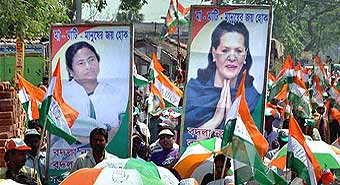
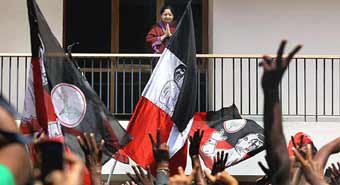
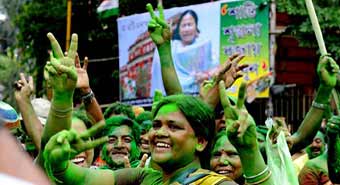

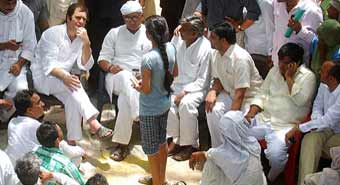
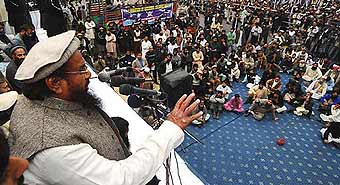
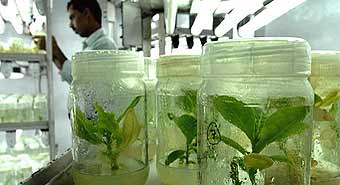



















No comments:
Post a Comment